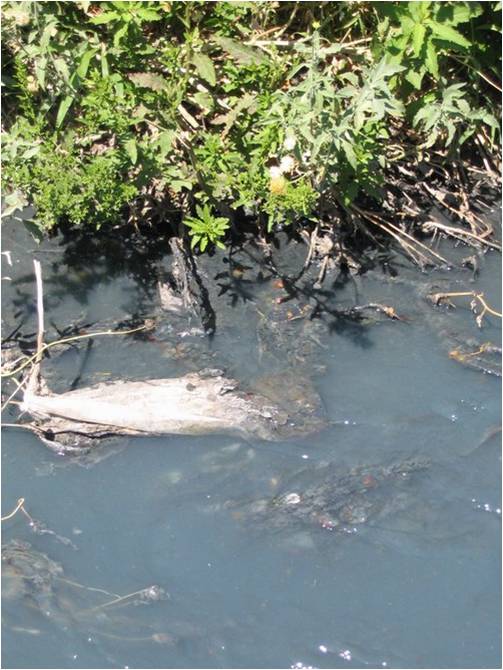| Line 13: | Line 13: | ||
* [[Tertiary wastewater treatment]]{{w|Tertiary wastewater treatment}} - an additional treatment stage to improve effluent quality its discharge into the environment. This covers additional removal of suspended solids, refractory organics, heavy metals and dissolved solids | * [[Tertiary wastewater treatment]]{{w|Tertiary wastewater treatment}} - an additional treatment stage to improve effluent quality its discharge into the environment. This covers additional removal of suspended solids, refractory organics, heavy metals and dissolved solids | ||
* "Advanced wastewater treatment" may be considered part of tertiary treatment, or may be considered separately - this is a matter of terminology. It includes nutrient removal - i.e. biological removal of [[nitrogen]] and [[phosphorus]] to avoid [[eutrophication]] of the receiving water body. | * "Advanced wastewater treatment" may be considered part of tertiary treatment, or may be considered separately - this is a matter of terminology. It includes nutrient removal - i.e. biological removal of [[nitrogen]] and [[phosphorus]] to avoid [[eutrophication]] of the receiving water body. | ||
== Minimizing health risks from blackwater== | |||
As blackwater may contain [[pathogens]], and/or harsh chemicals, it should be handled with great care and human exposure to greywater should be avoided. | |||
* Wash yourself after contacting blackwater. | |||
* Do not allow anything that may be eaten to come into contact with blackwater. | |||
* Do not allow blackwater to pond or run off the property (see [[Human defecation|drain-field systems]]) | |||
==See also== | ==See also== | ||
Revision as of 15:33, 3 October 2012
Wastewater, sewage or blackwater is water that has been polluted with human and/or animal feces/urine. It is different from greywater as the latter is only polluted with (non-)biodegradable soaps/detergents.
Wastewater management is an important part of sanitation. First and foremost the creation of wastewater should be prevented, ie by seperating human and animal feces/urine from the ambient water reserves (ie rivers, sea, ...). This can be done by not using flush toilets but rather composting toilets or even microwave or vacuum toilets[1].
If it is present nonetheless, wastewater needs to be managed. The essential components of wastewater management are the sewerage or sewage system (see sewage collection) and the actual wastewater treatment. It is important to treat blackwater seperatly from greywater, as the latter is less polluted and so requires less treatment steps. By having less quantity of water going trough less treatment steps the treatment procudure becomes more efficient and less costly.
Industrial wastewater is regarded as a seperate entitiy. This as it has some differences in level of hazard to public health, and in wastewater treatment requirements in comparison to wastewater. However, many of the processes are the same.
The stages in wastewater treatment are:
- Primary wastewater treatment - sieving and sedimentation.
- Secondary wastewater treatment - digestion of biological matter, usually through oxidation, although anaerobic digestion is also possible.
- Tertiary wastewater treatmentW - an additional treatment stage to improve effluent quality its discharge into the environment. This covers additional removal of suspended solids, refractory organics, heavy metals and dissolved solids
- "Advanced wastewater treatment" may be considered part of tertiary treatment, or may be considered separately - this is a matter of terminology. It includes nutrient removal - i.e. biological removal of nitrogen and phosphorus to avoid eutrophication of the receiving water body.
Minimizing health risks from blackwater
As blackwater may contain pathogens, and/or harsh chemicals, it should be handled with great care and human exposure to greywater should be avoided.
- Wash yourself after contacting blackwater.
- Do not allow anything that may be eaten to come into contact with blackwater.
- Do not allow blackwater to pond or run off the property (see drain-field systems)
See also
- Human defecation
- Types of toilets
- Earthship#Water
- Biogas: some wastewater plants implement anaerobic digestion (often using the Thermal_hydrolysis process) in their purification system to also create biogas, decreasing the costs of the purification
- Phosporus can be extracted from wastewater by adding magnesium, forming struvite
- ↑ First developed by Georgios Stefanidis, second developed by Grietje Zeeman /DeSaH
